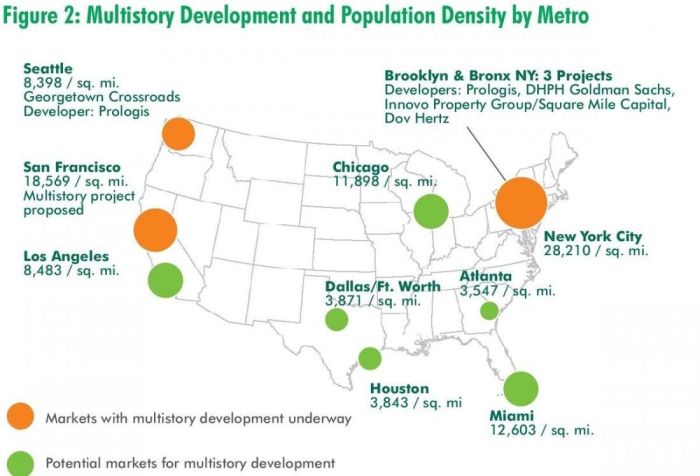
Courtesy of CBRE This graphic depicts population density per square mile in the respective urban areas according to information from the U.S. Census Bureau and Gazeteer Files, 2018.
Multistory warehouses are becoming more common in densely populated metropolitan areas, according to a new report put together by CBRE. Seattle, San Francisco, New York, Miami, Chicago and Los Angeles are the most favorable markets for this type of industrial development to take place due to the high land prices, dense population and the high concentration of e-commerce shoppers in these markets.
The multistory warehouse trend is just starting to emerge in the U.S., CBRE reports.
The recently completed three-story, 590K SF Prologis Georgetown Crossroads industrial multistory warehouse in Seattle’s Georgetown neighborhood will soon be joined by three more multistory warehouses in New York City and one in San Francisco.
“As a population, we have increasingly high expectations of almost immediate delivery of e-commerce items,” CBRE Seattle Senior Vice President Andrew Hitchcock said in a statement. “Densely populated cities with high land values will continue to see a fundamental shift towards multistory warehouses in an effort to develop modern facilities as close to the population as possible.”
Multistory warehouses are more common in densely populated parts of Europe and Asia. In the U.S., they are an emerging trend that may only take hold in the most densely populated metropolitan areas, CBRE Global Head of Industrial & Logistics Research David Egan said in a statement.
“We might need to see some additional adaptations that are common in Asia and Europe, such as smaller delivery trucks, which allow for tighter ramps, and, in turn, smaller building footprints,” Egan said.
No comments:
Post a Comment